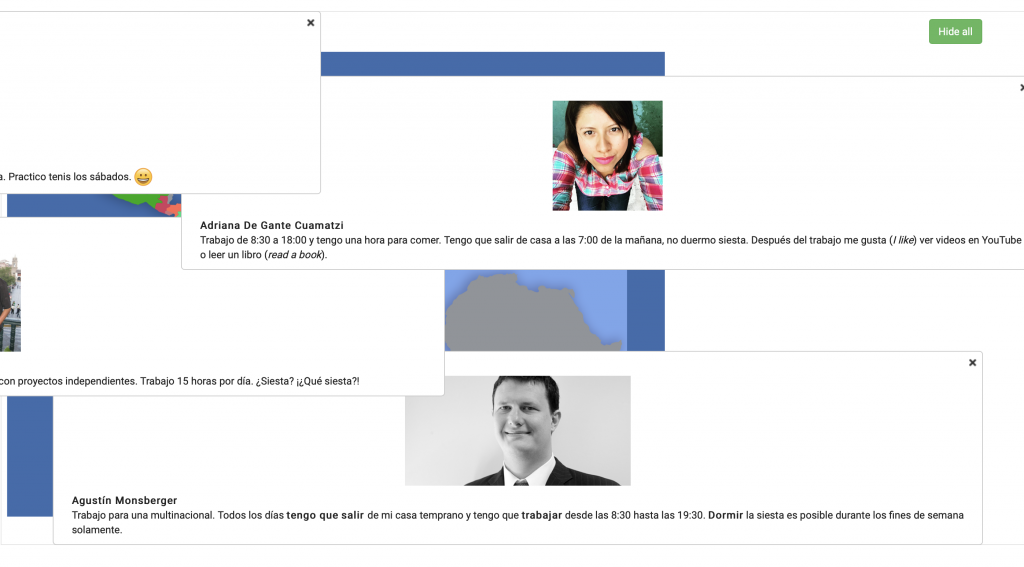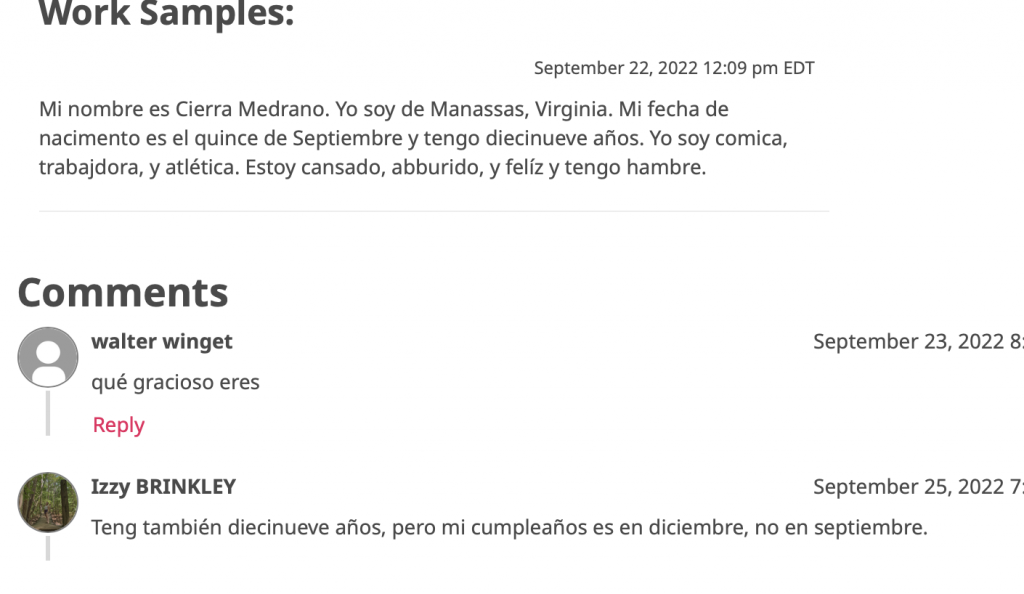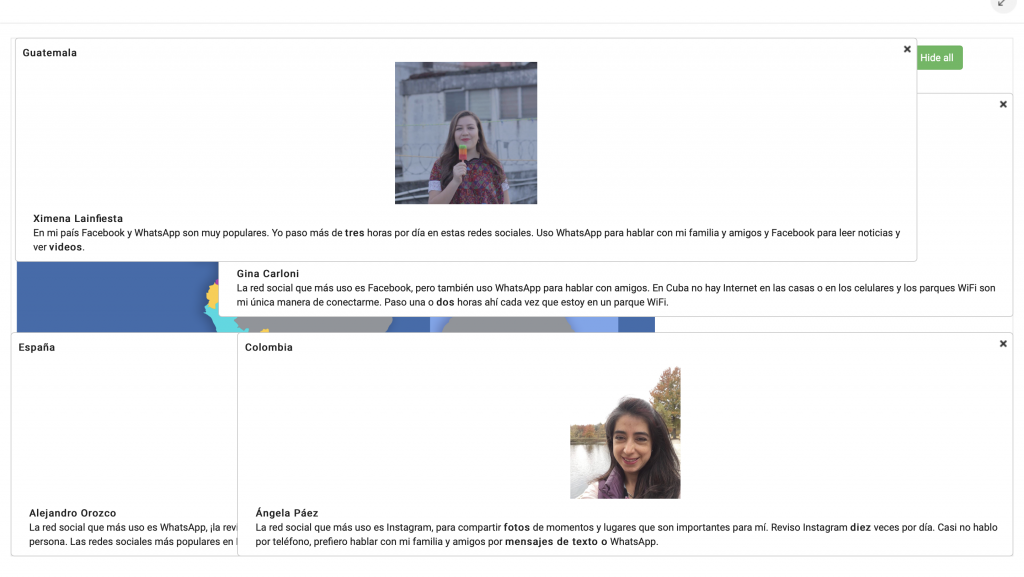Exploring Culture
A practice that helped me understand Hispanic culture is ”siestas” or naps.
Hispanic culture with naps helped me understand more about the work force and economic classes. It revealed to me that even in these countries, the working class is very unlikely to have time to rest during the work week. In our unit 3 cultura, we learned that the working class in hispanic countries often wake up very early in the morning to go to work and often don’t get home until later at night, where they then have to attend to their homes or independent projects. We learned that the upper class in Hispanic culture often have more maids or helpers which leaves them more time for leisure activities like siestas. I did not have a preconceived stereotype about Hispanic culture but it is interesting to see how similar our cultures are. It is not unusual to see the working class having little time to rest during the day or work week while the upper class citizens are permitted more time for leisure in America.

Junction. (n.d.). Retrieved December 8, 2022, from https://hub.lingrolearning.com/#/62fbfc2f2f7b02783dd3a9cd/6233b17e8e95ee7173ac53ba/6233b16b8e95ee7173ac4879
Engaging in Communities
In my opinion, it is important to have a sense of connectedness to your community because you should always give back to the community that gave to you. Additionally, growing up in a community makes you the most qualified to pin point issues that need to be addressed there. Being connected to your global community ensures that the world you live in is one that is inclusive and fair.

Interpersonal Communication
During the project portion of our class, we were instructed to leave comments on our classmates projects. Often times we were telling our classmates that we agreed with what they said in their project or that we were impressed with what they wrote in their project. This was another way we practiced communication in this course.
I liked having my classmates comment on my project. It afforded me the opportunity to correct my work and hear outside opinions. As for unplanned communication, from time to time in class, we were told to have conversations with our classmates or even having conversation with our professor. I enjoyed things like this because it kept me on my toes while learning this new language and also allowed me to help my classmates out with their language progression. These types of activities have helped me learn the Spanish language because it expanded my practice beyond just answering questions in LingroLearning. These types of assignments were tricky initially because I was not confident in my vocabulary. Over time and with much practice in class, I was able to be more confident in planned and unplanned dialogue. My teacher even commented on one of my oral exams saying I sounded like a native speaker!

Presentational Speaking
In unit 2, we were instructed to find a partner and have a basic dialogue getting to know each other. I enjoyed this project because it assisted me in being able to hold a conversation in spanish. My biggest challenge was being fluid in my speaking. I had to learn the material and get more comfortable with it to be able to have more fluidity in my conversation. I am half hispanic, but never was fluent in spanish. When I went home for winter break, I went around that side of my family and really paid attention when they were speaking spanish. This helped me a bit with the fluidity of my spanish speaking because I was able to sit and observe. The next time I have a speaking project or if I’m presented with the opportunity to speak in spanish, I will tell myself to slow down and comprehend what I am hearing before I respond.
/
Presentational Writing
In unit three, we created a calendar to describe what our day to day activities look like here on campus. We included times and places and were instructed to use the vocabulary we had learned thus far.
I got a 75/100 on this project. I neglected to use “ir + a + infinitive” and forgot to use tener que where it was needed. This is something I still struggle with and will be studying more. I also neglected to conjugate a couple verbs. This is something that I have gotten much better at with practice and homework we’ve been assigned in class.

Interpretive Listening
In unit 1, we were instructed to listen to an audio recording and record the information we heard. In the activity, the character was helping his grandmother create a social media account. So we were listening for things like her name, origin, traits and age.
This semester, when we were instructed to do listening activities, we were usually looking for verbs and terms we had learned in that chapter. I enjoyed doing these activities because they felt very “real-world”. I feel like these activities helped me to be able to interpret real-world conversations. Sometimes I would have to listen to the audio recording three or four times to understand what I was hearing. In this specific activity, I found it a little bit easier to interpret because the woman in the recording spoke slow and spelled words out. My takeaway from our listening activities would probably be to not get nervous when the opportunity to listen and interpret a conversation in Spanish. I will listen intently and watch body language to better understand.
Interpretive Reading
In the cultural exploration section of our units, we were instructed to read paragraphs about people in different parts of the world. From then, we were instructed to interpret these paragraphs and answer questions about them.
In unit 1, we read about social media usage in different countries. We answered questions like how much time they spent on social media and what was the most popular social media network used. These types of activities were fairly easy to me because I am naturally good at reading comprehension. What I learned from these activities is that reading comprehension is just as important as listening comprehension in the real world especially now that communication has been expanded through social media.
